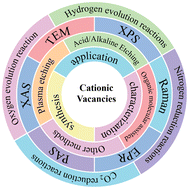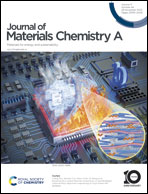Defect engineering: the role of cationic vacancies in photocatalysis and electrocatalysis
Abstract
Defect engineering is an effective strategy for regulating and controlling the properties of photocatalysts and electrocatalysts. Creating specific catalytic centers allows precise modulation of their electronic and material characteristics, enhancing electron enrichment. Defects generate synergistic unsaturated sites as active catalytic sites for chemisorption and activation in catalysis. This article systematically discusses the role of cationic vacancies in defect engineering, covering aspects such as synthesis methods, testing techniques and applications. It comprehensively summarizes recent research, underscoring applications in hydrogen evolution reactions (HER), oxygen evolution reaction (OER), CO2 reduction reactions (CO2RR) and nitrogen reduction reactions (NRR). In particular, the key role of cationic vacancy defect strategies in various applications is highlighted. Finally, the future opportunities, challenges, and prospects for further development of cation-defect-engineered catalysts are anticipated. The objective of this report is to elucidate the nature of cationic vacancy catalysts and provide valuable insights for designing defective cationic catalysts for various catalytic reactions.

- This article is part of the themed collection: Journal of Materials Chemistry A Recent Review Articles


 Please wait while we load your content...
Please wait while we load your content...